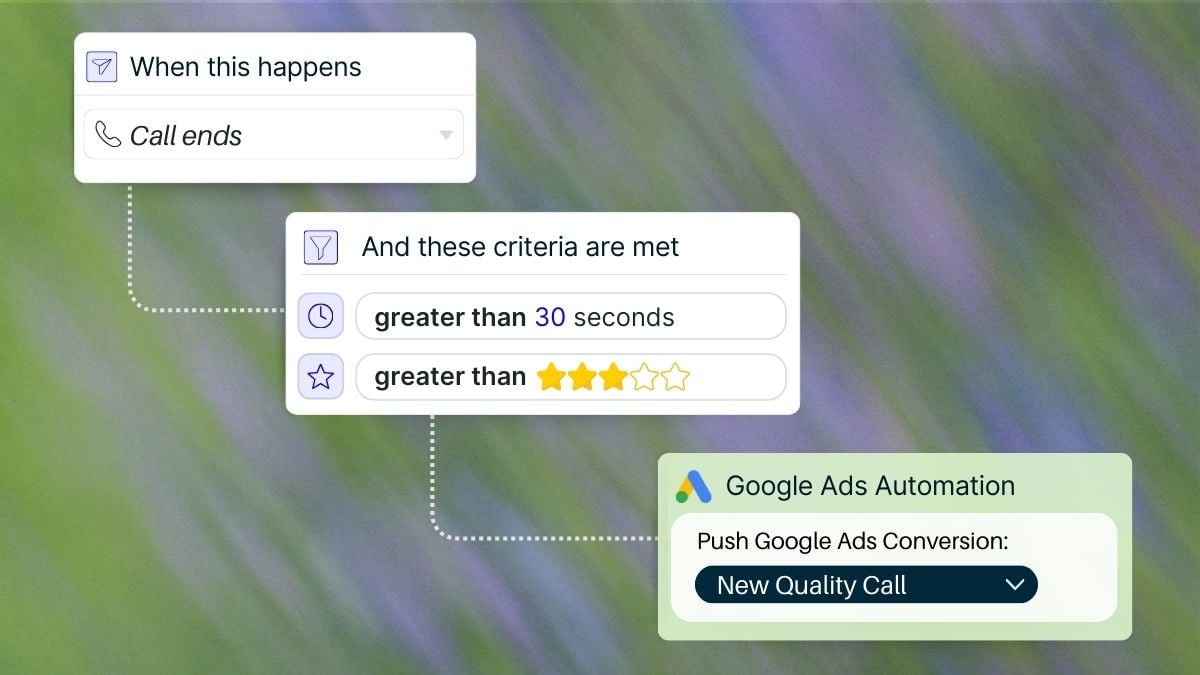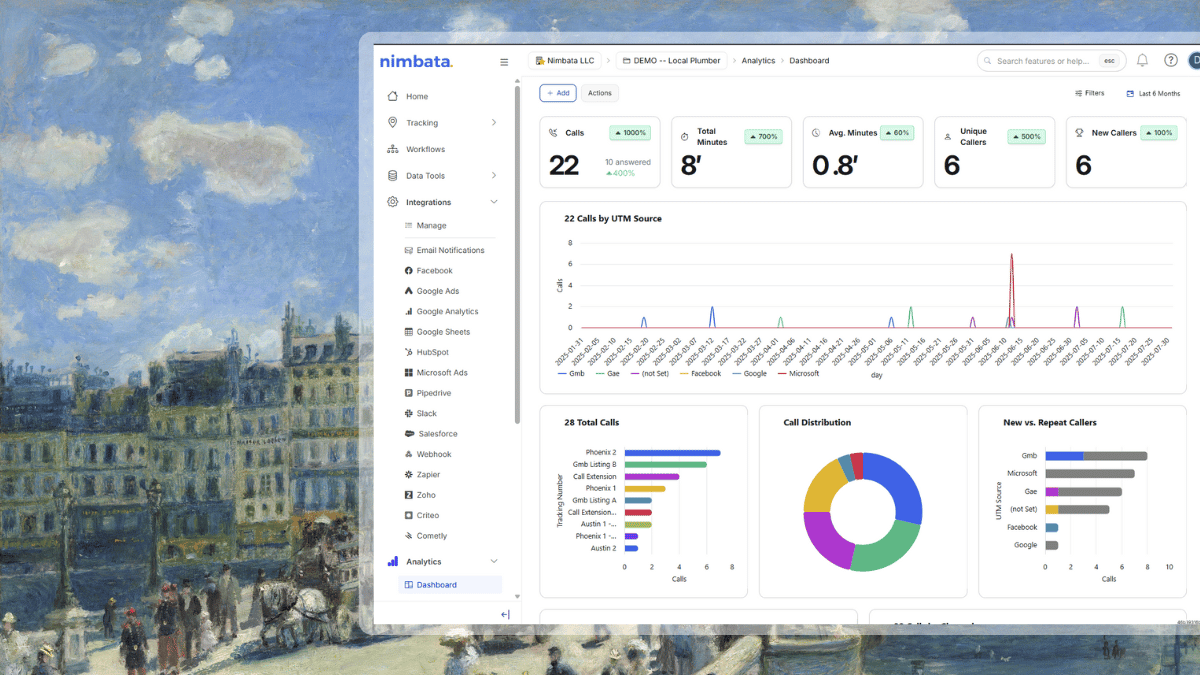Are you counting all calls? This inflates your qualified call conversions and CPA
When you count every phone call you receive as a conversion, you teach your ad platform’s algorithm to rely on incorrect signals. If the algorithm learns to count spam calls, support requests, and random inquiries as signs of a successful and valuable call, it’ll keep putting its emphasis (and your resources) on the wrong types of lead.
This will drain your budget, skyrocket your Cost Per Acquisition (CPA), and make your sales team question the quality of the leads they receive. Your reporting will also take a hit as it won’t match the data in your CRM.
To train the ad platform algorithm on sales-ready calls, you need to feed it the outcome data of these calls as they are logged in your CRM. If you can manage this, you will significantly lower your CPA, you’ll see a higher number of SQLs, and your budget will flow to the campaigns that bring business.
Here’s the fix we’ll use to teach the platform with better signals
The big idea: qualified call conversions & a closed-loop CRM update
Qualified-only means a call counts as a conversion only when it meets your quality, relevance, and engagement criteria. Everything else is logged but not uploaded as a conversion.
Closed loop means when a deal moves to SQL, Opportunity, or Won in the CRM, you send an update on the same event ID. This is how you keep every call tied to one conversion while erasing the possibility of duplicate creation and strengthening the signal.
This is the main idea behind how to get your ad platforms to learn from sales intent and to have them prioritize the quality of incoming calls over the volume.
To make this real, we need a shared, plain-English definition of ‘qualified.’
What a ‘qualified’ call means
With the big idea explained, let’s move on to the first of its two constituents we need to define; your definition of a ‘qualified’ call. Use this three-point rule to help you with it:
1. Quality
Ask yourself: Does the caller sound like a buyer? Did they mention keywords and phrases a potential buyer would typically say, like ‘book an appointment’ or ‘buy a [your product’s name]’? Then, layer this with AI so it remains consistent at scale: Turn on AI star ratings and auto-tags so calls that meet your standards by scoring high, i.e. at least a 4/5, and mention one of the buying terms you’ve defined receives a sales/qualified tag added to them automatically.
In practice:
- Set a minimum AI rating, e.g. 4/5 stars to auto-qualify potential buyers.
- Build a sales-intent keyword list with words like ‘book’, ‘book an appointment’, ‘quote’, ‘test drive’, and ‘pricing for [product]’.
- Set an AI auto-tag rule like: if the rating is 4/5 and above or if any of the sales keywords are heard, then add the tag ‘sales’ to the call.
2. Relevance
Relevance is about intent: does the caller show interest in your services (booking, quote, pricing) rather than support, wrong number, or existing customer? Use AI classification to separate sales/opportunity from support/spam so you only count sales-intent calls.
In practice:
- Mark the call as relevant when tags include sales or booking and the AI summary shows interest in your services.
- Mark calls as not relevant for support, warranty, existing customer, or wrong location queries.
- Add negative keywords from transcripts for non-sales topics so ads stop attracting those calls.
3. Engagement
It may sound self-evident at first, but engagement can be tricky to measure. Ask yourself: Is the call longer than a quick hang-up? Then, look at the time of day the call was made, and whether it came from a first-time caller or a repeat one. Make sure to count one conversion per call to avoid inflating demand with repeat callers.
Also, look for time-of-day patterns in qualified calls, aka when your audience is most active, so you can tighten ad schedules and reallocate budget into those high-response windows. Use reports by tag to spot peak hours when sales-intent calls occur, then apply ad scheduling in your ad platform.
In practice:
- Set a time benchmark for what you think is a long-enough call, e.g. more than 30s as your starting point, and treat calls between 45 and 60s as high-consideration sales.
- Allow for rare exceptions to the rule if certain keywords are mentioned in the call summary.
- Exclude after-hours, weekends, and voicemail from immediate qualification and route them to callback instead.
- Chart qualified calls by hour/day and shift budgets/ad schedules toward the peak windows; use time-based rules/routes where helpful.
Here’s how you can see the story of a call:
Quick setup to send qualified call conversions
1. Turn on AI analysis
Enable Call Transcriptions & AI Summaries, AI Star Ratings, and AI Auto-Tagging so every call is summarized, scored, and tagged automatically.
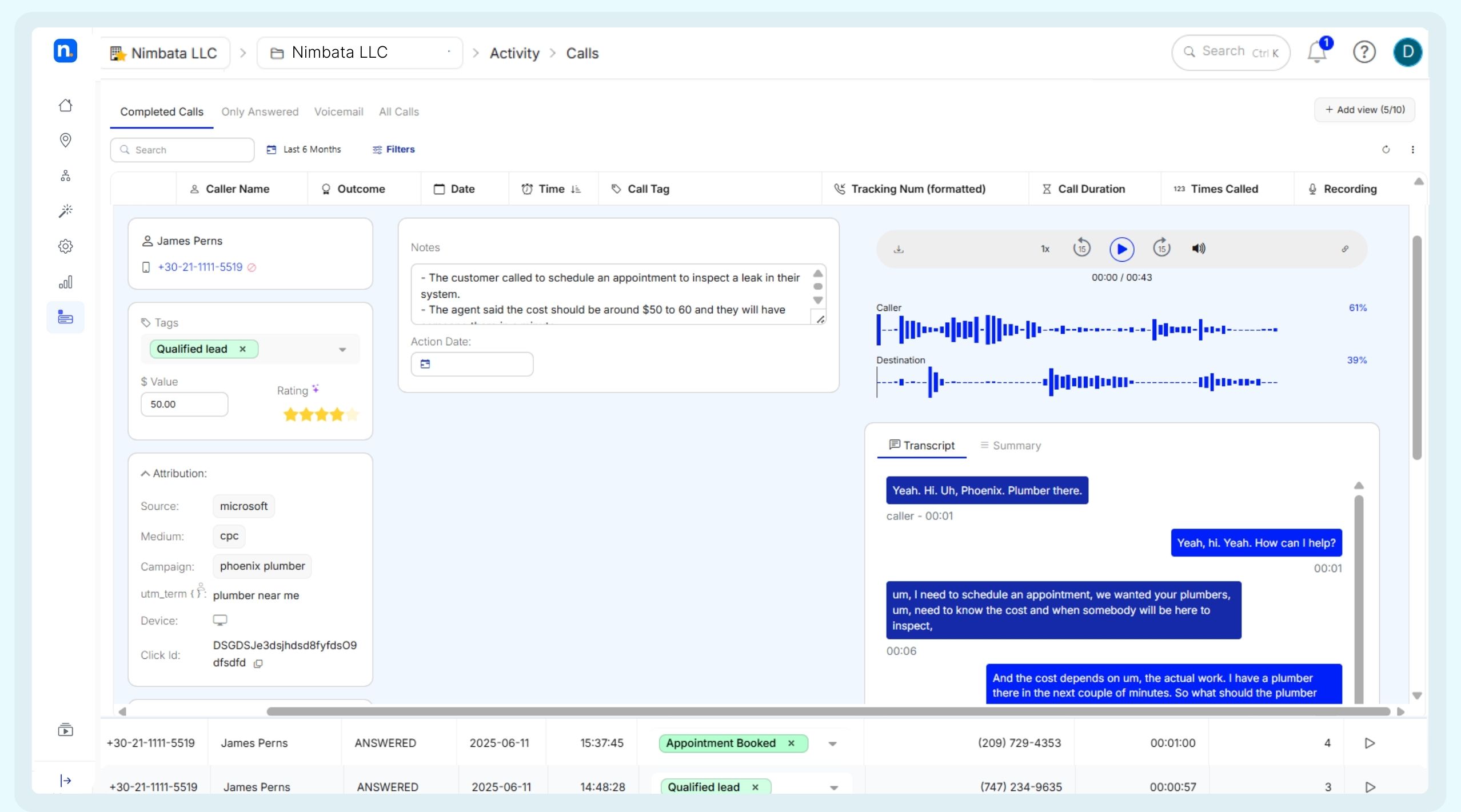
2. Define “Qualified” in a Nimbata Workflow
Then, set a plain ‘qualified’ rule of 4/5 rating or better, with specific sales-intent keywords present (quote, pricing, booking, test drive, etc.), and a duration of over 30 seconds (adjust as you learn).
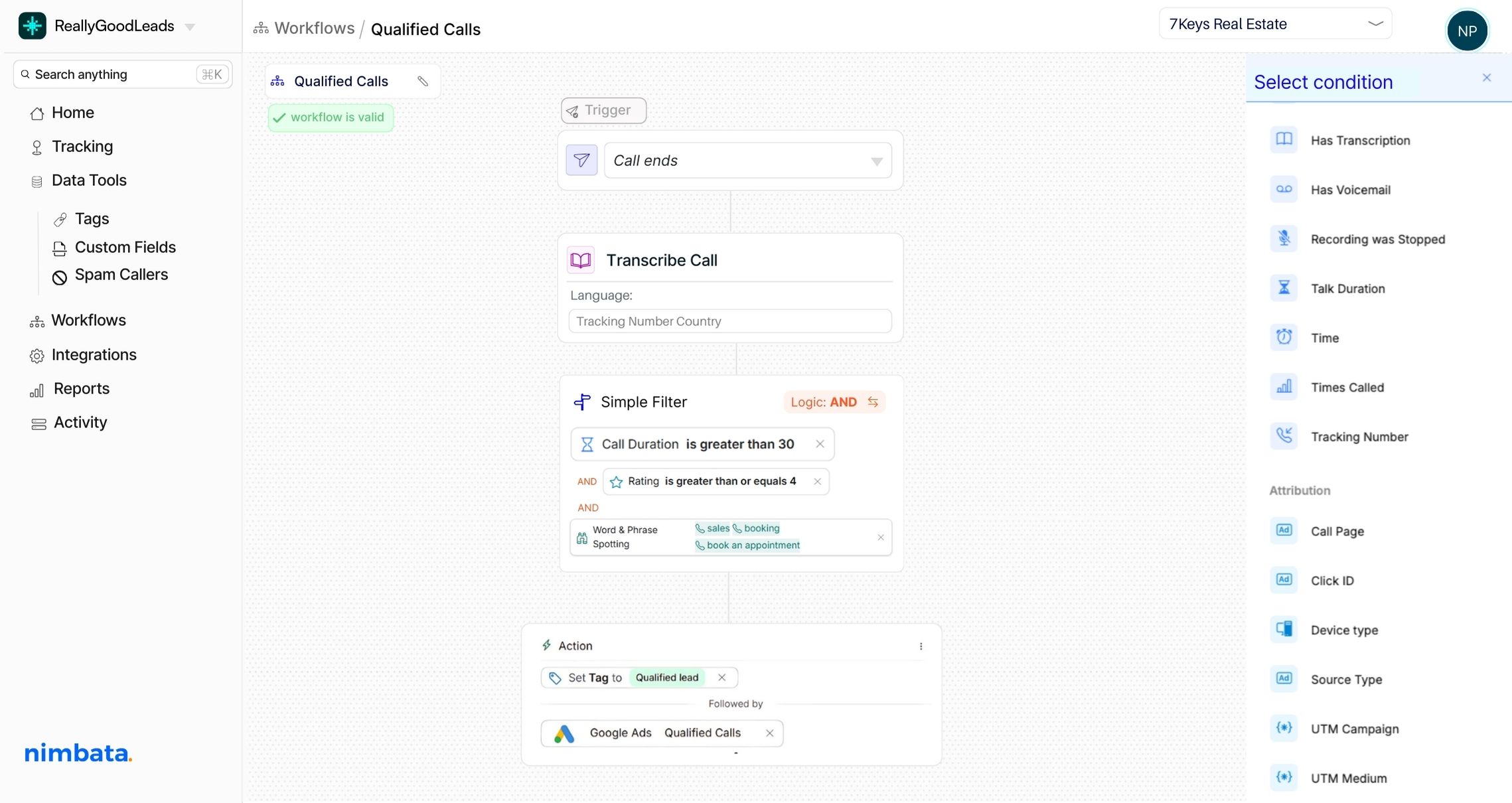
3. Connect your Google Ads to your call tracking solution
Connect your account to send offline call conversions (and values) directly.
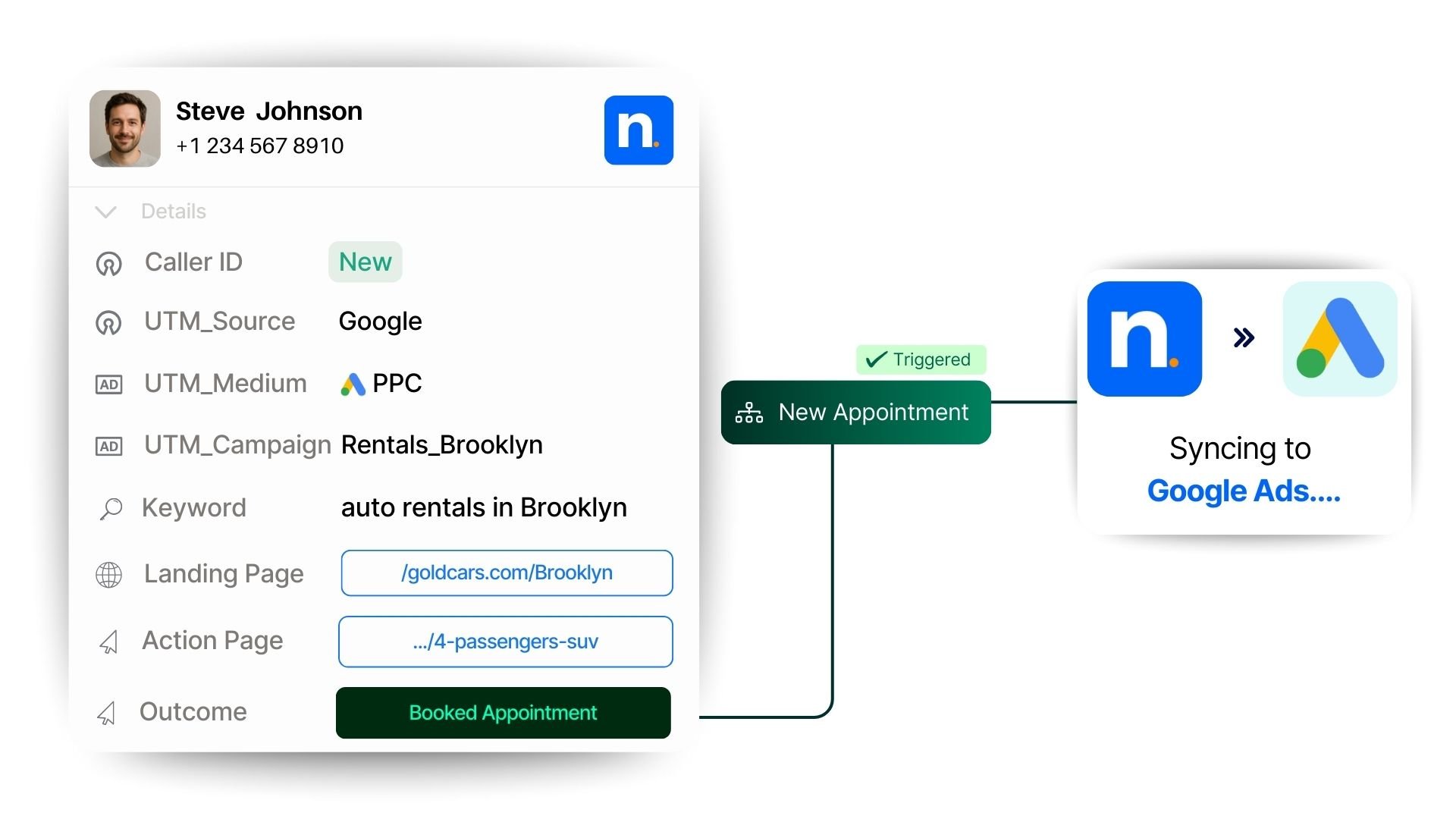
4. Create two distinct conversion actions and map them in your call tracking platform’s Google Ads integration
Qualified Call (binary): One conversion per call when it meets your Quality, Relevance, and Engagement rules. Include this in Conversions.
Sales Call (with value): When the call is tied to a sales outcome, attach a value so value-based bidding learns what brings in that revenue flow. Include this in Conversions to maximize conversion value/tROAS.
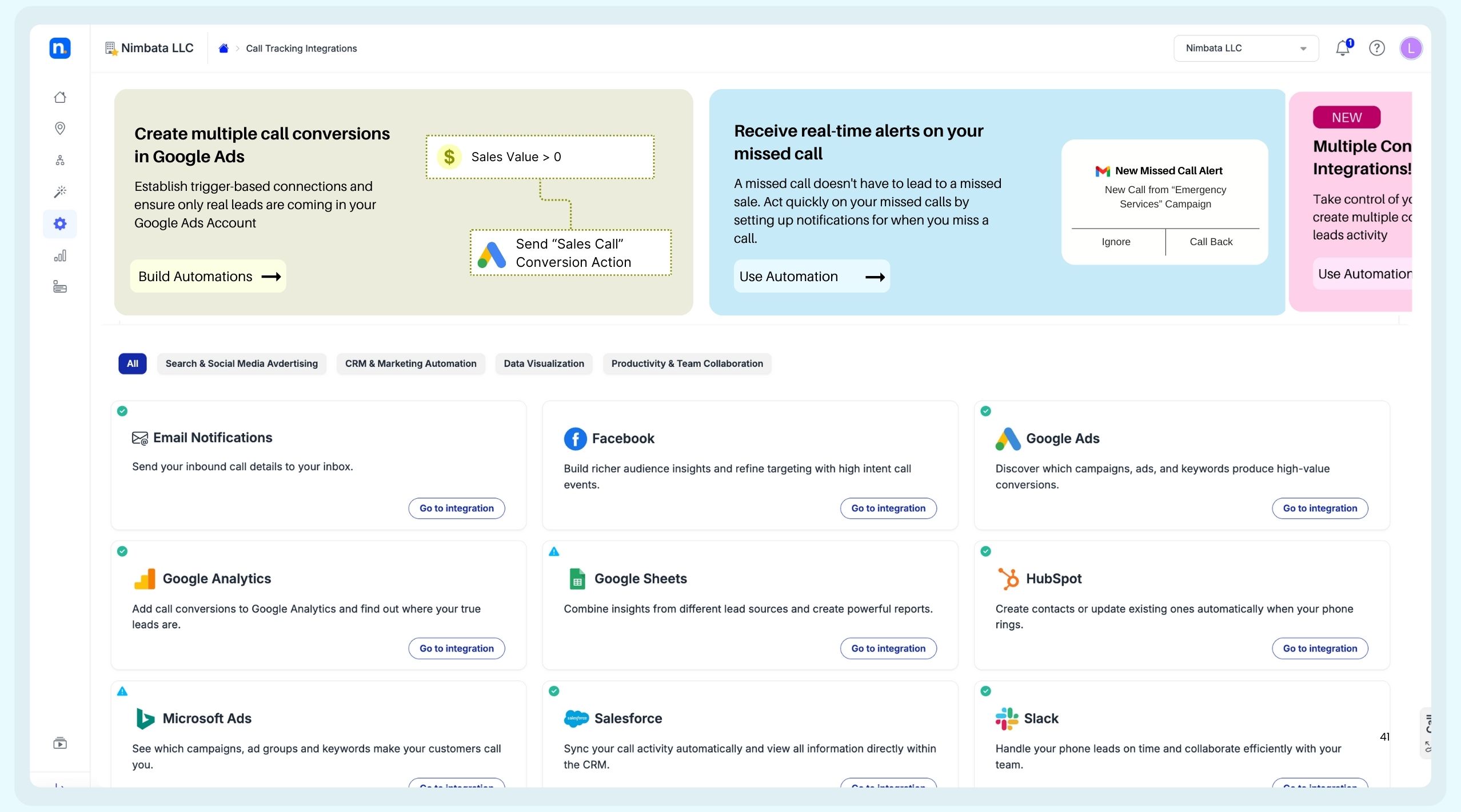
Measure impact where you work with Google Ads Custom Columns / Google Sheets
Create these columns once and watch efficiency surface directly in your campaign tables:
1. Create 3 Custom Columns in Google Ads
When you use this method, you don’t have to leave Google Ads to prove this works – just create 3 custom columns so you (and Smart Bidding) see the impact fast:
Path: Columns > Modify columns > + Custom column > Text mode > paste formulas > Save
Have distinct conversion actions, e.g. Qualified Call, Answered Call (or your All Calls action), and SQL (or Sales Call with value). Use the All conversions variants when filtering by conversion action to avoid double filtering.
1.1 Qualified rate
How to calculate: Qualified Calls ÷ All Answered Calls
Copy & paste in Google Ads:
| All_conversions.conversion_action(“Qualified Call”) / All_conversions.conversion_action(“Answered Call”) |
Note: Replace names with your exact conversion action names
1.2 Cost per Qualified Call (CPQC)
How to calculate: Cost ÷ Qualified Calls
Copy & paste in Google Ads:
| cost / All_conversions.conversion_action(“Qualified Call”) |
1.3 SQL rate
How to calculate: SQLs ÷ Qualified Calls
Copy & paste in Google Ads:
| All_conversions.conversion_action(“SQL”) / All_conversions.conversion_action(“Qualified Call”) |
If you pass values on your Sales Call action, add a column like Value / Qualified Call:
| All_conversions_value.conversion_action(“Sales Call with value”) / All_conversions.conversion_action(“Qualified Call”) |
- Tip from Google: If a conversion action is not set to “Include in ‘Conversions’, prefer All_conversions (and All_conversions_value) in your formulas so the filter behaves as expected.
2. Google Sheets
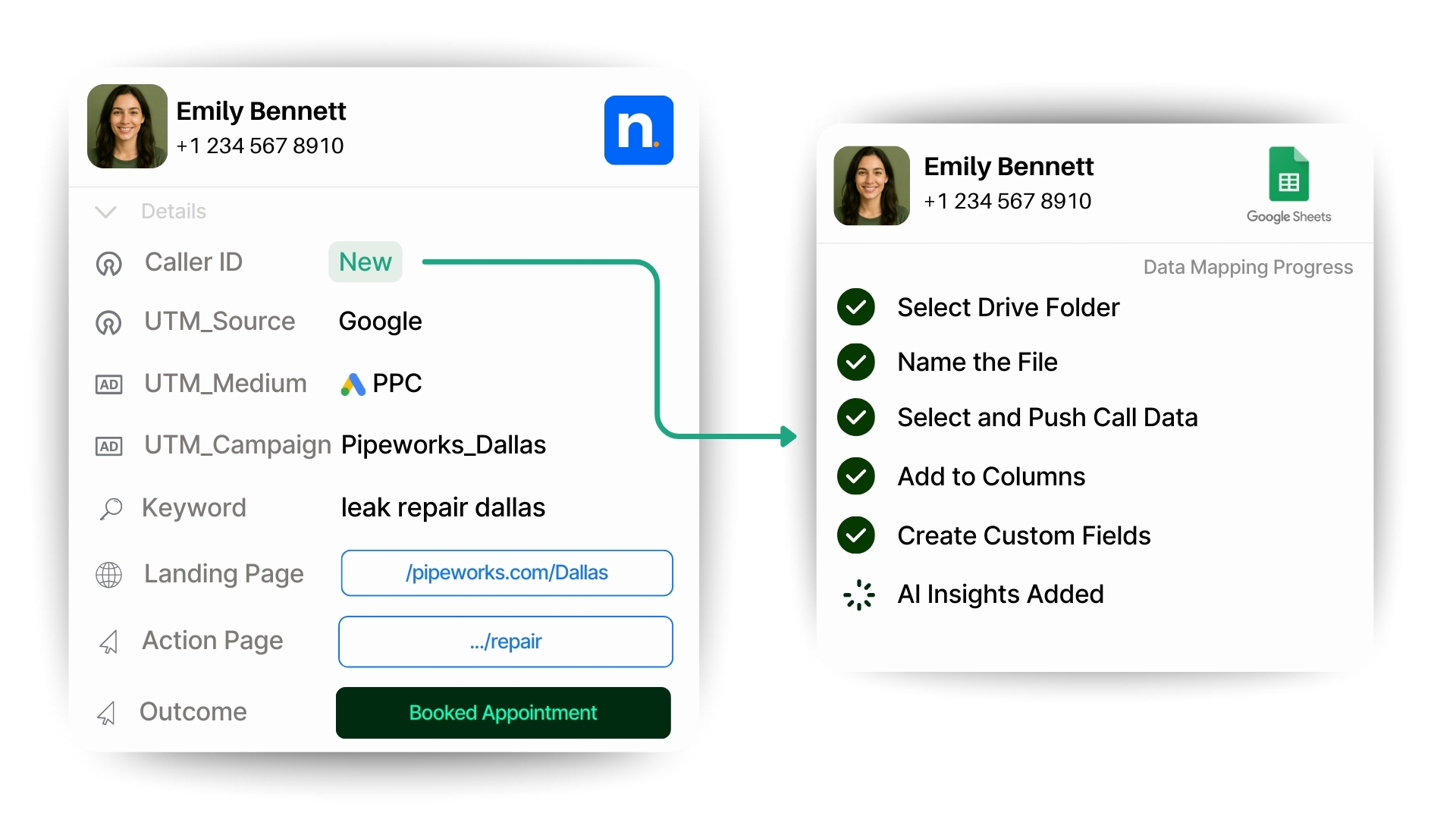
If you want a simpler, operations-friendly view, create a stream of call events to Google Sheets (qualified tag, answered status, SQL/Won, values) and calculate the same metrics with simple formulas. Nimbata’s Sheets integration pushes call data to a Sheet instantly, so your dashboard updates as calls land.
- Qualified rate: =Qualified_Calls / Answered_Calls
- CPQC: =Ad_Spend / Qualified_Calls
- SQL rate: =SQLs / Qualified_Calls
E.g. With €5,000 spend, 100 Answered Calls, and 40 Qualified Calls, your CPQC custom column shows €125. After tightening routing/tagging so 60 calls qualify (same spend), the CPQC column updates to €83. This clearly exposes the efficiency gain right in the Ads UI.
Now, your next step is to roll it out safely so nothing breaks.
Rollout plan – pilot, observe, optimize
Rather than rolling this out on all accounts at once, start small, make the necessary changes, and then:
Weeks 1 & 2: Observe mode
Keep qualified calls in ‘observe’ mode so they don’t control bidding yet. Watch CPQC, qualified rate, same-day uploads, and duplicates, and skim a few transcripts to confirm that qualified calls sound like real buyers.
Weeks 3 & 4: Flip the winners
Turn on optimization for a few steady campaigns and keep a similar control in ‘observe’ mode as in previous weeks. Use conversion action sets or per-campaign settings to limit where optimization applies and leave the rest as is until you can safely assume your numbers have improved steadily.
Week 5 and ahead: Scale
Expand to more campaigns once CPQC falls and SQL rate rises consistently, but keep service/support and other non-sales actions in ‘observe’ mode so they don’t guide bidding.
Weekly maintenance to keep Smart Bidding learning
Once the wiring is live, results grow from a simple weekly rhythm.
First, look at CPQC and the qualified rate by campaign. Push a little more spend into the pockets where CPQC is low and the share of qualified calls is high. Next, scan last week’s transcripts. The words your callers use are free performance clues, so add obvious negative terms (like support terminology, wrong city names, and competitor hotlines) so you stop paying for the wrong clicks.
Then, look at how many calls you missed and how fast you called people back. Lower missed calls and speed up callbacks to get better calls on the same budget. Finally, do a quick health check:
- Do conversions arrive on the same day?
- Do your Ads and CRM numbers look similar?
- Do you see zero duplicates?
Common issues and simple fixes in counting qualified call conversions
| Common Issues | Quick Fixes |
| Double counting | It’s almost always an ID mismatch. Make sure the same ID follows the call through Ads, Analytics, and the CRM. |
| Slow uploads | Check your workflows and aim for same-day conversion uploads as your standard. |
| After-hours and support calls becoming auto-qualified | Send them to voicemail and set up a callback workflow that requires manual approval. |
| Your ‘qualified’ volume drops too far | Your set of rules is too strict. Lower the duration floor by 10 to 15 seconds or widen the ‘sales’ tag, then test again. |
Reporting that speeds up budget decisions
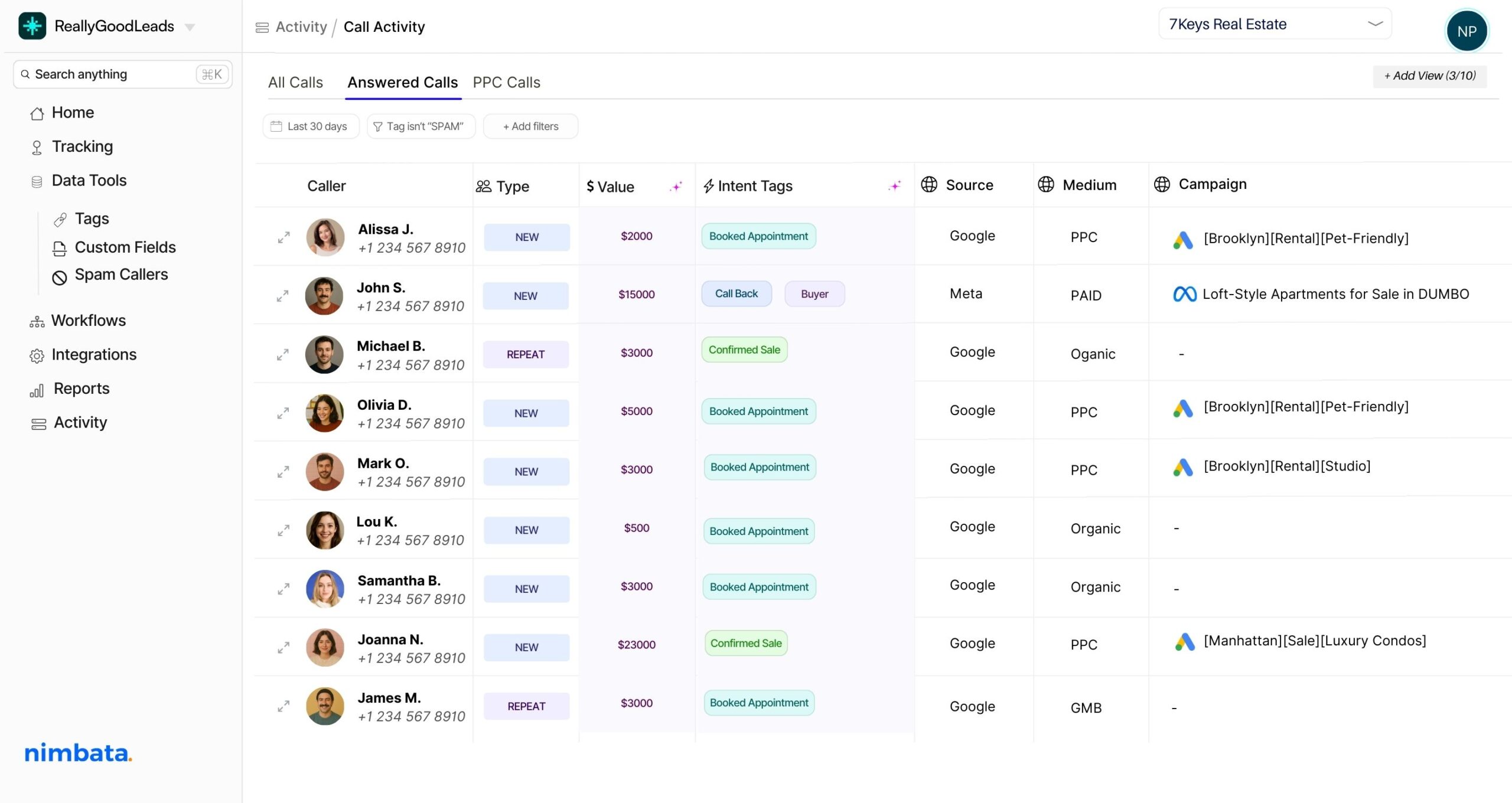
This format turns weekly fixes into monthly budget changes without extra meetings:
1. People in operations
They need one page they can act on. Create one that includes Qualified rate, CPQC, Missed-call %, and Median callback time. Add a short ‘This Week’s Moves’ note beneath it.
2. Executives
They want the month in one glance. Show a simple funnel, such as Qualified > SQL > Revenue, along with three bullet points on what you’ll change next month. Keep numbers big and tie every change to your budget.
Conclusion
What’s clear is that you don’t need to up your budget. Rather, you need to feed your ads with better-quality signals. When you only count qualified call conversions and pair that with sending SQL/Won updates on the same event ID, you teach Google’s algorithm to chase sales intent, not random queries. If all goes according to plan, you should see CPQC fall and SQL rate rise within four weeks, meaning your budget has successfully switched to money-making campaigns.
Try it on one high-spend campaign this week. If CPQC drops and SQL rate rises within two weeks, turn it on for the next three campaigns.
Your call tracking tool
doesn’t have to suck!
Flexible Product, Expert Support, Transparent Pricing.

